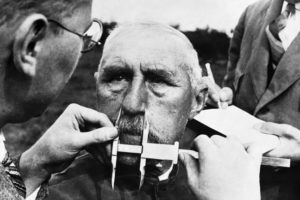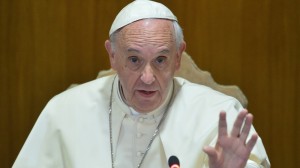
The last few years have been rocked from worldwide protest movements and revolutions that have erupted in response to increasing austerity measures, poverty and corruption.
One of the most notable of these was the Egyptian and Tunisian revolutions in 2011 that received widespread news coverage across the world at the time.
Millions of protesters across the country demanded the overthrow of the regime of Egyptian President Hosni Mubarak.
The protests led to the dissolution of the government. This sparked similar protests across the Middle East and led to the rulers of those countries to either dissolve their parliaments or quickly draft in concessionary laws in a bid to appease an angry population.
But unlike the Middle-Eastern protests, there were other protests across Europe that did not receive nearly as much coverage – if any at all. The little coverage that was received was either played down or criticised heavily by the media.
The Icelandic revolution is a case in point. In contrast to the relatively lacklustre results which emerged from the popular Occupy movement that begun in 2011, protesters in Iceland also managed to oust their government following a fiscal squeeze. It led to the arrest of several corrupt bankers in the country and the resignation of the head of the central financial regulatory authority. In addition, a new constitution was drafted up by 25 democratically elected citizens in the country.
So why didn’t you hear about it? Why did the Arab spring receive such widespread coverage in stark contrast to the Icelandic spring?
This is something that is not entirely clear, but a few interesting facts remain. The Middle-Eastern protests have proven the extent to which movements can spread. When ordinary people see others who are not afraid to stand up for what they believe in, they are more likely to be encouraged to follow suit.
This is why just one person, or a small group of people can create effective changes in their country. But if you are living in a country which is not perceived to be a dictatorship and you do not hear of the protests which are taking place on your own doorstep, it reduces the likelihood of people taking similar actions.
And consider this: not long after the Egyptian protests, it emerged that the American government secretly backed leading figures behind the Egyptian uprising who had been planning “regime change” a few years prior.
A story uncovered by the Telegraph has revealed some of the extent to which the US government were behind the protests.
The disclosures, contained in previously secret US documents released by WikiLeaks, show that US officials pressed the Egyptian government to release dissidents who had been detained by the police.
In fact the US has done little to disguise its support for the original protests in the oil-rich country with Hillary Clinton, expressing her “concerns” about the attempts by the Egyptian security forces to quell the uprising. After the election, Hesham Mohamed Qandil was elected as Egypt’s new president. But the protests continued in response to what was seen as a government that did little to alleviate the concerns which led to the original marches.
In Iceland however – and indeed many other European countries – it was a different story.
Their initial protests were triggered by one man, Hörður Torfason, who stood alone outside of the Icelandic parliament. But within a matter of weeks he rallied hundreds of thousands of people around him after spreading the word.
Hörður is an activist and artists who has appeared in many films, documentaries and plays in Iceland. He is also known for spearheading the gay movement in the country during the 70s after temporarily being forced into exile from the country because of threats to his life.
Reporters at Akashic Times caught up with to find out more about his inspiration behind the recent protests. He said: “What I did in the beginning is I walked around for three or four weeks and I talked to people and drew up a list of three demands. One was that the government should resign. The second one was that the board of the national bank should resign. The third was that the board of the financial supervisory authority should resign.”
The protests received widespread support and most of the basic demands – with the exception of the constitution – were met. The national GDP and economy also started to recover slightly.
But following the resignations that occurred shortly after, it became clear that the banking elites that had helped to cause the financial crash in the first place were still going strong, and some families were still reeling from unemployment and poverty.
Despite this, activists in the country have made it clear that the fight isn’t over.
Hörður explained that meetings were still being held weekly in the country and people are still fighting for change.
He said: “It is very clear that we will have to fight for years to come. It goes up and down, you win a battle and you lose a battle. But never lose faith in what you are fighting for.”
But real change does not just come from street uprisings. The forming of new organisations, thinktanks and lobby groups is another effective tool which revolutionaries in the country have been using at their disposal.
ALDA, the association for sustainability and democracy is one such group. Kristinn Már Ársælsson, board member of ALDA said that the group was formed due to the frustrations with the status quo which continued after the elections.
He said: “The reason we started ALDA was because we saw immediately after the forming of a new government no real structural changes were going to be made, we had the old system as it was before and it was back to business as usual. I got involved with ALDA after the protests and after the change in government.”
So what does ALDA do? According to Kristinn, ALDA work with various protest groups across the country and are involved in the constitutional reforms which are currently being debated in parliament. In addition, they give talks, and hold events although they do not get involved directly with the running of parliament.
Kristinn said that although there is a need for change – not just in Iceland, but across the world – there is no one-size fits all approach to how that change can be achieved. But he still has high hopes for a fairer and more democratic society.
He added: “There has been a lot of new political parties formed and a lot of organisations like ALDA trying to lobby for change. That is a positive thing that has come out of the crisis. People are much more active in social debates than they were before the crash.
“I would say that there is huge support for something new and for radical changes to the structure of the system.”
So what is the way forward? Protests have continued to sweep across Europe and shows no sign of abating.
Lisbon in Portugal has hit the headlines recently after well over 100,000 took to the streets demanding change. The mass rally occurred just four days before Portugal’s international lenders were due to start the quarterly evaluation of the bank bailouts.
Armenio Carlos, head of the country’s largest union, CGTP, told supporters: “We take this opportunity here to make our own evaluation on behalf of those who suffer daily. IMF doesn’t call the shots here! We have to step up the struggle.”
The protests have continued over several nights so far, and is gathering speed. Meanwhile, UK demonstrations are set to take place across London, Edinburgh and Cardiff on May 4th of this year.
Akashic Times is the UK’s only online, fully independent not-for-profit weekly newspaper that brings you real news from across the globe.
If you want to keep ahead of what is really going on in the world, subscribe to our newspaper via the subscribe button and join our Facebook & Twitter pages. Subscription is completely free ofcourse















Follow Us!